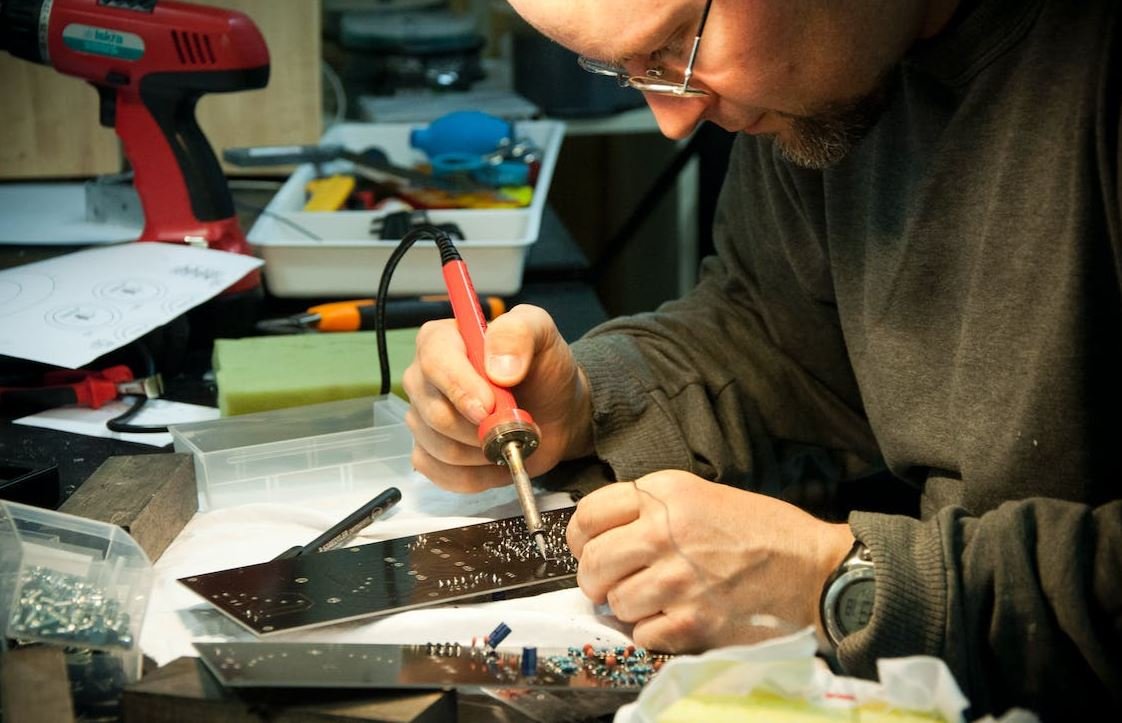What Are Neuralink Chips?
Neuralink chips are high-tech brain-machine interfaces (BMI) developed by Neuralink Corporation, a neurotechnology company founded by Elon Musk. These innovative chips are designed to augment human intelligence and enable a direct interface between the human brain and computers.
Key Takeaways:
- Neuralink chips are brain-machine interfaces that allow direct communication between the human brain and computers.
- They are developed by Neuralink Corporation, founded by Elon Musk.
- These chips aim to augment human intelligence and enhance various aspects of human cognition.
- Neuralink chips have the potential to revolutionize healthcare and improve the lives of people with neurological disorders.
*Neuralink chips use a dense array of microelectrodes to detect and record brain activity, and to stimulate specific regions of the brain.*
One of the most interesting aspects of Neuralink chips is their ability to decode and interpret neural signals. These signals, generated by the neurons in the brain, carry information related to our thoughts, actions, and sensations. By analyzing and deciphering these signals, Neuralink chips open the door to a wide range of applications, including restoring mobility to individuals with paralysis, treating mental health disorders, and even enabling direct communication between humans and machines.
| Application | Potential Benefits |
|---|---|
| Paralysis Treatment | Restoring mobility and independence to paralyzed individuals. |
| Mental Health Therapy | Improved treatment options for mental health disorders, such as depression and anxiety. |
| Human-Machine Interaction | Enabling direct communication and control between humans and computers. |
*Neuralink chips have the potential to revolutionize healthcare by providing new treatment options for various neurological conditions.*
Neuralink chips are designed to be minimally invasive, with a small device implanted into the skull. This device, sometimes referred to as the “N1 neural implant,” contains all the necessary electronics to power and communicate with the neural interface. The implantation process is delicate and requires the expertise of trained neurosurgeons, ensuring the chips are safely and accurately placed into the brain tissue.
- The chips are implanted into the skull to establish a direct connection with the brain.
- The N1 neural implant contains the necessary electronics for communication and power.
- Neurosurgical expertise is required to implant the chips accurately and safely.
| Feature | Description |
|---|---|
| Microelectrode Array | A dense array of microelectrodes to record and stimulate brain activity. |
| Wireless Communication | Allows seamless communication between the chip and external devices. |
| Long Battery Life | Battery technology capable of powering the device for extended periods. |
*The successful integration of neural interfaces into the human brain has the potential to unlock unimaginable possibilities for human evolution.*
While Neuralink chips are still in the early stages of development, they hold incredible promise for advancing our understanding of the brain, treating neurological disorders, and enhancing human capabilities. With ongoing research and development, Neuralink chips have the potential to reshape the future of healthcare, technology, and human potential.
*The potential of Neuralink chips to revolutionize healthcare and human capabilities is awe-inspiring.*

Common Misconceptions
1. Neuralink Chips are used for mind control
Despite some fears and misconceptions, Neuralink chips are not designed for mind control. They are neural interfaces that are implanted into the brain to assist with various medical conditions and improve cognitive capabilities.
- Neuralink chips are not capable of manipulating thoughts or controlling individuals.
- They do not give any external entity direct control over a person’s mind.
- The primary goal of Neuralink chips is to restore or enhance brain function.
2. Neuralink chips are only for superhumans or the wealthy
Another common misconception is that Neuralink chips are only intended for the super-rich or individuals seeking to gain superhuman abilities. However, Neuralink aims to develop affordable and accessible neural interface technology that can benefit a wide range of people.
- The ultimate goal of Neuralink is to make the technology available to everyone.
- Initially, Neuralink may be more accessible to those with medical conditions, but the long-term vision includes widespread adoption.
- Neuralink chips aim to democratize access to advanced brain-machine interfaces.
3. Neuralink chips can read people’s thoughts
One prevailing misconception is that Neuralink chips have the ability to read people’s thoughts. While Neuralink indeed interfaces with the brain, it does not possess any advanced capabilities to directly interpret thoughts.
- Neuralink chips can sense and record electrical signals in the brain, but deciphering thoughts is a complex and ongoing research challenge.
- Current Neuralink technology is focused on improving motor and sensory capabilities, not decoding thoughts or intentions.
- Interpreting thoughts accurately is a complex task that requires significant advancements in neuroscience.
4. Neuralink chips are a threat to privacy and personal security
Some people have concerns about privacy and personal security when it comes to Neuralink chips. However, Neuralink is committed to robust privacy protection and ensuring the security of user data.
- Strong encryption and data protection measures are implemented to safeguard sensitive information.
- Neuralink’s privacy policy emphasizes user consent, transparency, and data anonymization.
- Regulatory frameworks will be implemented to protect individuals’ privacy rights and data security.
5. Neuralink chips will replace human intelligence
Lastly, there is a misconception that Neuralink chips will eventually replace human intelligence. However, the goal of Neuralink is not to replace human abilities but to augment and enhance them.
- Neuralink aims to develop neural interfaces to help individuals overcome physical and cognitive limitations, not replace their natural intelligence.
- The technology seeks to work in harmony with the human brain to provide new capabilities and improve quality of life.
- Neuralink chips are a tool to enhance human potential, not a means for artificial intelligence to surpass human intelligence.

Neuralink’s Visionary Founders
Neuralink, a neurotechnology company founded in 2016, aims to develop implantable brain-machine interfaces that can enhance human capabilities. Here are some key details about the visionary founders behind Neuralink:
| Co-founder | Age | Previous Ventures |
|---|---|---|
| Elon Musk | 50 | Tesla, SpaceX, PayPal |
| Max Hodak | 34 | Transdeus, Transcriptic |
The Need for Brain-Machine Interfaces
As technology continues to advance, there is a growing need for brain-machine interfaces (BMIs) that merge humans and machines. Here’s a breakdown of the need for BMIs:
| Potential Applications | Benefits |
|---|---|
| Neurological disorders treatment | Improved quality of life |
| Enhancement of cognitive abilities | Increased mental capabilities |
| Augmentation of physical skills | Enhanced performance |
Neuralink’s Innovative Technology
Neuralink is at the forefront of developing cutting-edge brain-machine interface technology. Here are some remarkable features of their innovative system:
| Feature | Description |
|---|---|
| Thread-like probes | Ultra-thin electrodes for minimally invasive implantation |
| High channel count | Ability to connect with thousands of neural connections |
| Wireless data transmission | Fast and reliable communication with external devices |
Advantages of Neuralink Implants
Neuralink chips offer unique advantages over traditional brain implants. Here are some reasons why Neuralink implants are highly advantageous:
| Advantage | Description |
|---|---|
| Minimal invasiveness | Reduced risk of side effects and complications |
| Greater compatibility | Robust integration with brain tissue |
| Incredibly precise | Accurate targeting of specific neural circuits |
Ethical Considerations
Despite the potential benefits, brain-machine interfaces also raise important ethical considerations. Here are key ethical concerns related to Neuralink and similar technologies:
| Ethical Concerns |
|---|
| Privacy and data security |
| Autonomy and consent |
| Equity and access |
Neuralink’s Impact on Neurological Disorders
Neuralink has the potential to revolutionize the treatment of various neurological disorders. Here are some disorders that could be positively impacted:
| Neurological Disorders |
|---|
| Parkinson’s disease |
| Paralysis |
| Epilepsy |
Challenges in Implementing Neuralink
Though promising, the implementation of Neuralink faces certain challenges. Here are key hurdles that need to be overcome:
| Challenges |
|---|
| Regulatory approval |
| Long-term safety |
| User acceptance |
Neuralink’s Potential Future Applications
Looking ahead, Neuralink holds vast potential for various applications beyond medical use. Here are some potential future applications of Neuralink:
| Future Applications |
|---|
| Virtual reality integration |
| Brain-to-brain communication |
| Memory enhancement |
Commercial Viability of Neuralink
Commercial viability is crucial for the success of Neuralink. Here is a breakdown of factors that contribute to Neuralink’s commercial potential:
| Commercial Factors | Description |
|---|---|
| Increased demand for BMIs | Growing market for brain-machine interfaces |
| Technology licensing opportunities | Potential partnerships with various industries |
| Research and development investments | Ongoing innovation and advancements |
Neuralink’s groundbreaking technology and the promise it holds for improving human potential and health make it a captivating venture. As we navigate the ethical considerations and address the challenges, Neuralink opens up a realm of possibilities, not only in the medical field but also in applications we can only begin to imagine.
Frequently Asked Questions
What are Neuralink chips?
Neuralink chips are advanced brain-machine interface devices designed by Neuralink Corporation. They are small implants that can be inserted into the brain to establish a connection between the brain and external digital devices.
How do Neuralink chips work?
Neuralink chips work by embedding tiny threads, thinner than a human hair, into the brain. These threads, equipped with electrodes, can detect and stimulate brain activity. The information is then transmitted through the chip to external devices for further processing or communication.
What is the purpose of Neuralink chips?
The primary purpose of Neuralink chips is to enhance human cognition and create a symbiotic relationship between the human brain and AI technology. They hold the potential to treat neurological disorders, improve memory, enable faster communication with digital devices, and enhance overall brain performance.
Who can benefit from Neuralink chips?
Neuralink chips have the potential to benefit individuals with neurological conditions, including paralysis, Alzheimer’s disease, Parkinson’s disease, and spinal cord injuries. Additionally, they can enhance the capabilities of healthy individuals by providing direct interfaces between the brain and technology.
Are Neuralink chips safe?
Neuralink has carried out extensive safety and testing procedures to ensure the safety of their chips. However, as with any invasive medical procedure, there are potential risks involved. Neuralink is committed to addressing and minimizing these risks through rigorous research and development processes.
Can Neuralink chips be removed?
Yes, Neuralink chips can be removed. The removal process involves a surgical procedure, which should be performed by qualified medical professionals. It is important to note that removal may result in some residual effects, and the decision to remove the chip should be carefully considered.
How long does it take to implant Neuralink chips?
The process of implanting Neuralink chips typically takes a few hours. However, the duration may vary depending on factors such as the complexity of the procedure and the specific case of the patient. It is essential to consult with a medical professional for accurate information regarding individual cases.
What advancements have been made with Neuralink chips?
Neuralink has made significant advancements in the development of their chips. They have pioneered a technique called ‘sewing machine’ robot that carefully threads the probes into the brain, minimizing potential damage. They have also developed advanced algorithms for decoding and interpreting brain activity.
Are Neuralink chips a form of mind control?
No, Neuralink chips are not a form of mind control. Their purpose is to provide a communication interface between the brain and digital devices. The technology aims to enhance human cognition and enable users to voluntarily interact with technology, rather than exert control over individual thoughts or actions.
How can I stay updated on Neuralink chip developments?
To stay updated on Neuralink chip developments, you can visit the official Neuralink website. They regularly publish updates, news, and research findings on their platform. Additionally, following Neuralink on social media channels and subscribing to their newsletters can keep you informed about the latest advancements in the field.




